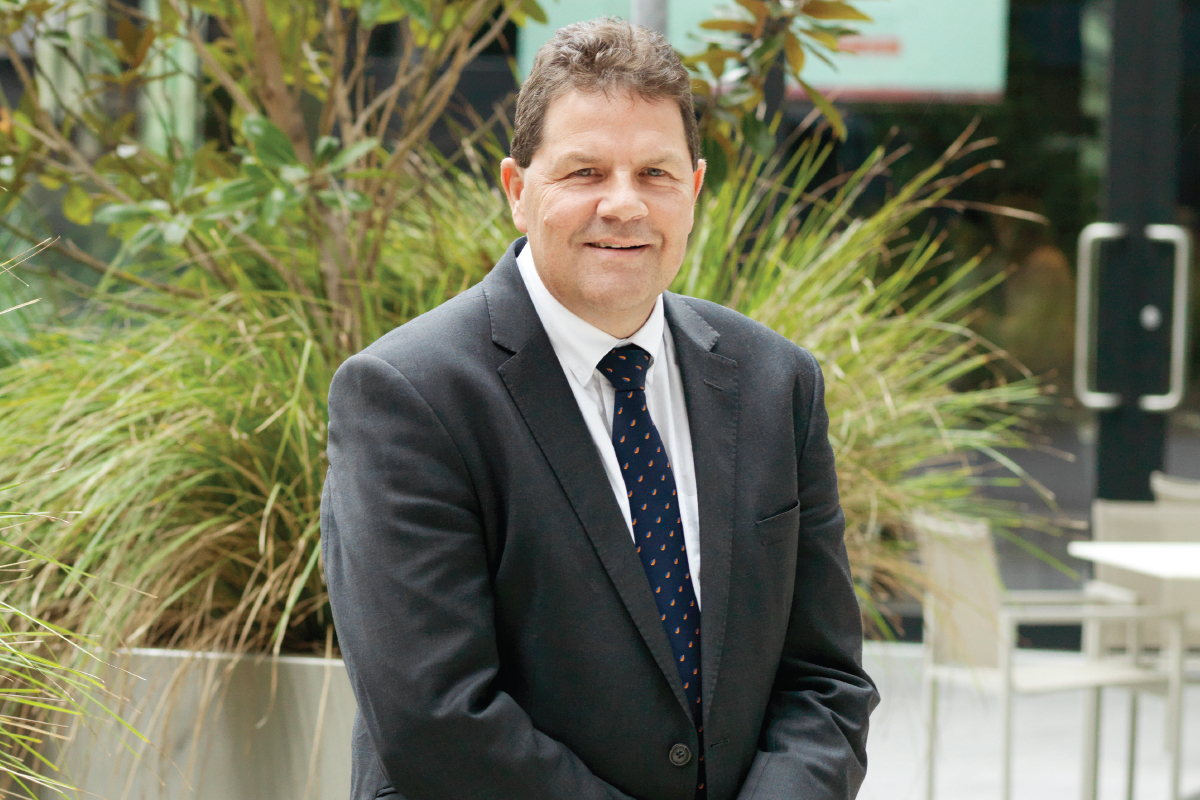During his time with Grampians Wimmera Mallee Water (GWMWater), Mark Williams has seen, managed and implemented a tidal wave of change. The first of those changes was when Mark’s employer, urban water provider Grampians Water, merged with rural provider Wimmera Mallee Water in 2004 to form GWMWater. Mark was CFO at the time but also responsible for business strategy. He subsequently became acting managing director in 2011, later confirmed into the role in April 2012.
Mark Williams is “privileged to be working in water”
The appointment coincided with the completion of the Wimmera Mallee Pipeline in 2010 – one of the largest water infrastructure projects in Australia. “I’ve been very privileged to be working in water in our region because of the extent to which things have changed. You don’t get those sorts of opportunities too often in a lifetime,” he enthuses.
A Victorian Government-owned water authority, GWMWater covers a large part of the state – over 62,000 square kilometres – and provides services to 32,000 urban and 11,000 rural customers in towns and rural areas across the region. “It’s a big area,” notes Mark. “Our network is around 14,000 kilometres of pipeline. It’s an area that couldn’t have been settled without a water supply.”
Our focus is very much on the customer.
As CFO, Mark’s mandate was to put the funding together for the Wimmera Mallee Pipeline project. This included the development of a pricing proposal that was very much based on the customer affordability to pay for an improved service. The Commonwealth and Victorian Governments supplied funding at $266 million each.
GWMWater is saving water
Construction commenced in 2006, and was completed ahead of target and within budget in 2010. “We saved 103,000 megalitres of water, of which 83,000 megalitres went back to the environment. Then, 20,000 megalitres was freed up for development in that region and in the north.”
Prior to the pipeline system, as the water went through 16,000 kilometres of earthen channels, it would evaporate or seep into the ground. “Only 15,000 megalitres would actually end up getting used. In 2007 and 2009, the Wimmera River effectively went dry. And the Glenelg River, which GWMWater also harvests from, is substantially challenged from an ecological health perspective,” explains Mark.
“Now, rather than harvesting water and committing it all to consumptive use, the environment has its own entitlement. We operate the system and release water into the waterways in accordance with plans of the Catchment Management Authorities and the Victorian Environmental Water Holder.”
Providing a vital service during drought
During drought years, GWMWater provides a vital service, ensuring the community has continuing access to water, particularly the rural areas. “In the lead-up to 2016, there were four or five of the driest years on record. But by virtue of having a reliable water supply, farmers could certainly run livestock. Cereal production became a challenge because there was insufficient rainfall, but with the ability to run livestock, you can still diversify your agricultural activity.”
The drought was also the catalyst for the extension of the Wimmera Mallee Pipeline into the Loddon Shire. The lack of rain meant farmers had little water in their catchments and virtually all landowners in the area were water carting. Furthermore, there was insufficient water for firefighting and recreational use. Mark says he expects more dry weather in the future.
“From our region’s climate-change models, our best guess is that rainfall will be more intermittent, making farming more challenging. With a secure water supply, it will sustain and enhance agricultural productivity. That’s the value of pipelines in our region.”
A digital utility
Integral to the Wimmera Mallee Pipeline was the implementation of a new SCADA system. It was an opportunity to turn GWMWater into a digital utility. Upon the project’s completion, a network of low-powered radio devices supplied by Taggle were constructed at each customer point to enable remote meter reading.
“Called the Rural Pipeline Intelligence Project (RPIP), it gives us a leg-up in relation to technology. Now we have better supervisory capability, more data acquisition, and better visibility across what’s happening inside our networks,” says Mark. “It allows consumers to access their water usage information too. Now any farmer can access it in pseudo-real time and detect leaks earlier. The customer portal side went live on 1 January 2017.”
Improving customer service & satisfaction
For Mark, who comes from the region, serving the community is of utmost importance. Thus, the change he’s most proud of initiating at GWMWater is improving customer service and satisfaction. “It was one of the biggest challenges, and opportunities, when I was appointed as managing director. Organisations with a strong engineering origin tend to think more about the technology and not what the value proposition is to the customer. Our customer favourability and net promoter score has increased year on year. We’ve probably had the best result ever on our most recent customer survey.”
Mark is currently working on a project that is quantifying the socioeconomic benefits of recreation water to the region. In collaboration with the Wimmera Development Association, GWMWater is undertaking a study about recreation lakes and the improved environment of the waterways and rivers. “Not only is water important from a water-supply perspective, but it is also very important in our region from a social amenity and recreational perspective,” shares Mark.
“We have a commitment to provide 3,000 megalitres directly going into recreation lakes. It’s really providing some exciting communal points for people to go and relax and socialise around water-based activities. In fact, the Victorian government announced a new water policy document last year. If you look through the chapters that deal with recreational and agricultural water use, a lot of the things we’re doing come through quite strongly in the policy statement. And I think that’s really challenging the rest of the state to come up to the level we’re at.”



